40+ Sample Employee Engagement Surveys
-

Research Employee Engagement Survey
download now -
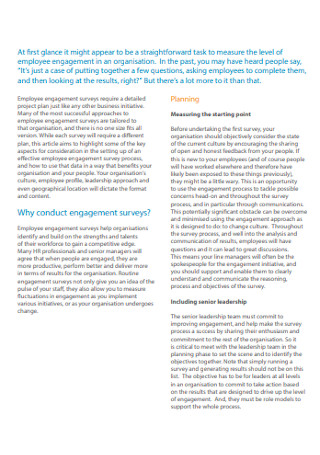
Sample Employee Engagement Survey
download now -

Company Employee Engagement Survey
download now -

Employee Engagement Survey Summary
download now -

Office Employee Engagement Survey
download now -
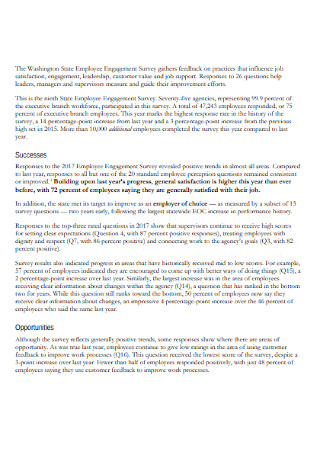
State Employee Engagement Survey
download now -

Designing Employee Engagement Survey
download now -

Health Care Employee Engagement Survey
download now -

Employee Engagement Survey Results
download now -
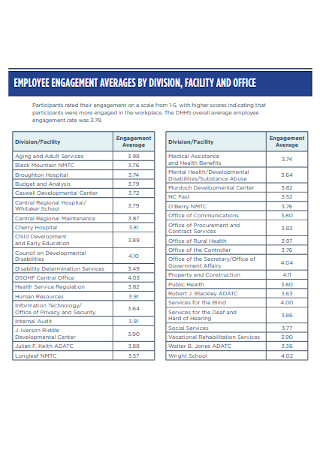
Human Services Employee Engagement Survey
download now -

Government Employee Engagement Survey
download now -

Employee Engagement Survey Analysis
download now -

Employee Engagement Survey Report
download now -

Basic Employee Engagement Survey
download now -

Employee Engagement Survey Research
download now -
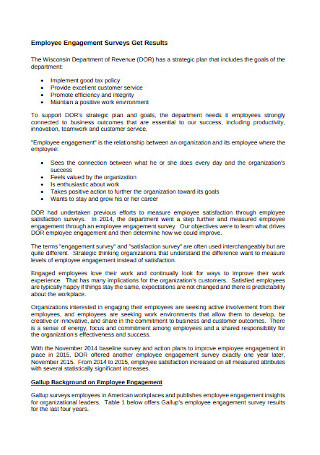
Employee Engagement Survey Get Results
download now -

Employee Engagement Survey Executive Summary
download now -

Employee Engagement Survey Planning
download now -

Service Employee Engagement Survey
download now -
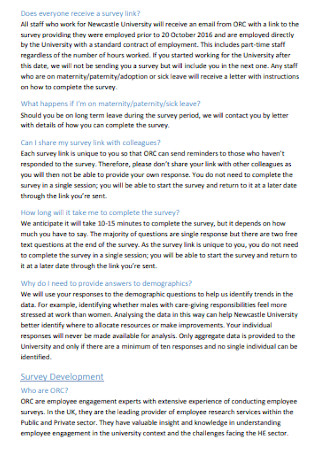
Employee Engagement Survey Questions
download now -

Employee Engagement Survey Results Rollout
download now -
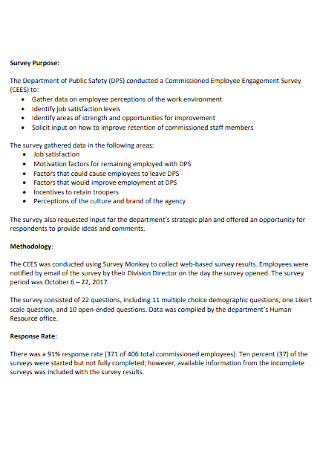
Commissioned Employee Engagement Survey
download now -

Corporation Employee Engagement Survey
download now -

Employee Engagement and Satisfaction Survey
download now -

Municipal Employee Engagement Survey
download now -

Employee Engagement Survey Results Influence
download now -

Employee Engagement Survey Highlights
download now -

Supreme Court Employee Engagement Survey
download now -

Standard Company Employee Engagement Survey
download now -

University Employee Engagement Survey
download now -

Employee Engagement Survey Project Overview
download now -

Employee Engagement Survey Response Rate
download now -

Employee Engagement Survey FAQ
download now -

Employee Engagement Survey Outcomes
download now -

Employee Engagement Survey Items
download now -

Employee Engagement Survey Feedback
download now -

Bank Employee Engagement Survey Results
download now -
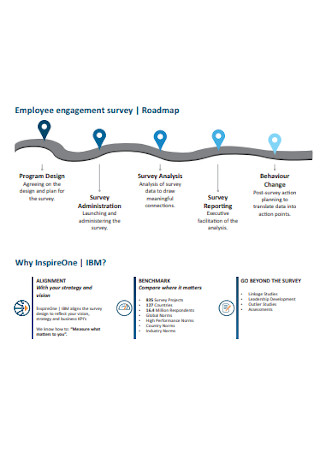
Employee Engagement Survey Advantage
download now -

Sample Employee Engagement Survey Questions
download now -

Employee Engagement Survey Value
download now -

Professional Employee Engagement Survey
download now -

Formal Organization Employee Engagement Survey
download now -
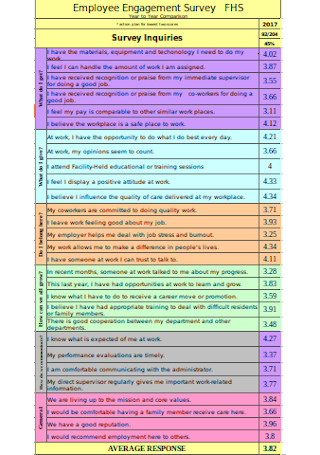
Employee Engagement Survey Format
download now
FREE Employee Engagement Survey s to Download
40+ Sample Employee Engagement Surveys
The Purpose of an Employee Engagement Survey
How to Conduct an Employee Engagement Survey
The Dos and Don’ts of an Employee Engagement Survey
The Purpose of an Employee Engagement Survey
There are many reasons why organizations administer employee engagement surveys. Apart from gathering insights about the company’s operations, it also allows you to discover whether your employees are satisfied with their benefits, motivated to do more, and committed to a shared goal. According to Gallup, highly engaged employees are likely to generate 21% more in profitability for the business, leaving you with numbers that will help your company thrive in a competitive market. Employee engagement surveys also function for the following reasons:

How to Conduct an Employee Engagement Survey
There’s nothing easy about creating a research survey. It’s more than just putting a bunch of questions together to send out for employees to answer, as the point is to conduct a survey that will bring value to your company’s initiatives. It requires a detailed project plan that can uncover the key factors to drive employees to perform and deliver better results for organizational success. But getting this data requires a lot of work, so here’s a step-by-step guide that you can follow.
Step 1: Set Objectives
Like most projects, you must put a lot of thought into this process. You can’t expect the survey to fix every single issue all at once. It’s essential to set your priorities straight by focusing primarily on problem areas that show a decrease in productivity and overall performance. Your objectives must center on the wants and needs of your employees to ensure that they are given the utmost attention. Careful planning should keep you on track and help you garner the best results for the company to prosper.
Step 2: Construct Your Questions
Once you have a purpose for conducting the survey, you create a road map that will help you target the vulnerable aspects of your workforce and make it easy for you to ask questions that are relevant to the problem. While there are many types of questions that you can ask your respondents, it’s best to focus on open- and close-ended questions that will help you generate a sufficient amount of data for your study. Items in your employee questionnaire must also be written clearly and concisely for readers to comprehend. This is crucial to ensuring that your data remains specific and accurate to what you are asking.
Step 3: Design the Survey Carefully
Surveys can take a while to complete, which is what hinders most people from responding to it sincerely. Survey questionnaires that are lengthy and overly complex will likely put your efforts at risk of generating poor results. Think of it this way: nobody wants to answer a survey that requires much of their time and thought.
You can easily avoid this issue by keeping your survey short and simple. Always check whether your questions may be too sensitive to ask, and try to modify it to lessen the weight it leaves on respondents. You also need to make sure that your questions follow a logical flow of ideas to help readers process them more quickly. Conducting a test run might even reveal loopholes in the survey that require immediate correction.
Step 4: Evaluate the Results
After getting your target respondents to answer your survey, it’s time to examine the results. You can translate this data through the use of charts, graphs, and other tabulations for quick analysis. This will likely unveil trends or patterns that affect the way employees operate daily. This may also allow you to discover underlying problems within the company that may have been overlooked in the past. Once you have identified the possible solutions to these problems, you can then share what you have gathered with the rest of the team leaders through a sit-down meeting. These sessions will help you collaborate on special programs that may enhance your employee engagement.
Step 5: Take Action
An employee engagement survey is a stepping stone that will help you initiate change within the organization. Your plan of action must align with the results of the survey and the goals you have for the business. From there, you can strategize on programs that best suit your company culture and workplace environment to see whether these initiatives can improve employee engagement.
Since it would be impossible to notice any major changes within a short time frame, it’s best to monitor your progress over time to find out whether you are progressing or in dire need of a change of approach.
The Dos and Don’ts of an Employee Engagement Survey
How well are you optimizing your employee surveys? With the amount of time and resources invested in the process, you’ll want to make sure you’re getting the most out of your surveys. High turnover rates can be alarming, as they prove just how weak your employee engagement efforts are. Aiming for a healthy and comfortable environment for your employees is key to operating successfully. With that said, here are a few reminders to take note of when it comes to employee surveys.
Dos
1. Do make it clear.
If you want reliable answers for each question in your survey, you have to make it easy for readers to understand what you are asking from them. Be sure to construct each question carefully to meet the needs of your respondents. Questions must be as concise as possible to get your message across correctly to a respondent, leaving you with accurate answers that are pertinent to your study. It’s also a good idea to steer clear of jargon that some employees may not be familiar with.
2. Do get your employees involved.
When you want to improve how your employees operate as a team, and as individuals of your workforce, you have to make sure you understand their needs. The primary purpose of this type of survey is to strengthen the engagement that employees have to their work. Thus, it only makes sense to develop a survey with the help of a few of your employees. It may include someone from the management or even representatives from different departments. These individuals may serve as spokespersons for the group, as they are knowledgeable enough to provide useful input for the success of your survey.
3. Do apply various survey methods.
One practical approach to data gathering is the use of multiple surveying techniques for collecting information. Survey questionnaires often contain different types of questions, and asking the right questions also means using the proper method to obtain your data. Statistical surveys, for instance, come with a scale that allows respondents to rate their answers based on a particular system. This type of survey centers on quantity-based results that are much easier to measure toward the end of the process.
4. Do allow anonymity.
Confidentiality is crucial to respondents who want to provide honest answers for sensitive questions that concern them, especially in a workplace setting. This increases the accuracy of your survey and leads to a better understanding of your workforce.
However, anonymity also has its drawbacks that you might want to consider before beginning your survey. You may acquire comments that violate your company procedures, which may not be acted upon because of how it invades the privacy of your survey respondents. But if you really want your employees to be open about how they think and feel about the company, speculating about who said what should be the least of your worries.
5. Do measure results.
While employee engagement does tell you a thing or two about how involved your employees are to the concerns of the organization, it’s also essential to look into your employee satisfaction, motivation, and commitment levels to find out how you can improve your current programs. Keep in mind that employees who are well-cared for by their employers have a higher chance of delivering favorable results for the business. Hence, the data you acquire can be extremely valuable to the future of your company and its workforce.
Don’ts
1. Don’t survey everyone.
Useful surveys are often targeted to a particular audience. To yield accurate information for your research, conducting a company-wide survey isn’t exactly the best idea. Every unit of the organization has different sets of problems and concerns that need to be addressed. You can’t expect one solution to cater to every one of those groups, especially if it fails to acknowledge the critical issues being faced. Take the time to design a survey that digs deeper into the insights of your employees for better engagement.
2. Don’t try to change their views and opinions.
You may not like some of the answers you collect, and that’s what makes employee surveys challenging to digest. But consider this as a time of humility that will give you a better glimpse of how your employees view the organization as a whole. This isn’t a time to convince employees that what you’re doing is for the better, but rather a time to initiate change. The survey should make it easy for your personnel to communicate anything that runs through their heads that should concern employers. This is an opportunity for you to discover any changes to prioritize for the well-being of your employees.
3. Don’t go into what you already know.
It’s easy to assume that a certain problem exists when they’re out in the open, but many organizations fail to acknowledge why or how these problems came to be in the first place. Keep in mind that what you see on the surface can only be a small part of more significant concern. This type of mindset may cause you to overlook other issues of significant concern that demand the most attention. The best way to tackle this problem is to use a survey that addresses a broader angle of the subject, then narrowing it down to more specific questions along the way.
4. Don’t conduct a survey without establishing your purpose.
Avoid getting into things without a plan in place. There’s no point in conducting a survey if you don’t intend to listen and act upon whatever feedback your respondents have to offer. If you’re committed to doing what’s best for your people, the survey should help you understand what needs to be done to keep your employees engaged. The last thing you’ll want is for your employees to be skeptical about your ability to connect with them directly. It’s only natural for people to expect change considering the amount of time and effort they put into responding to your survey.
5. Don’t keep it to yourself.
Although the data obtained from your survey will be beneficial to how the management operates, you wouldn’t want to keep this information to yourself. Sharing these results to the rest of the workforce will keep them in the loop as you work your way to creating an action plan. By keeping others involved in the case, you have a higher chance of succeeding in your employee engagement efforts.
Remember that the success of your employee engagement survey depends on how well you administer it. It means taking action when you need to and initiating change where it is most necessary. This approach will steer your company and your workforce in the right direction, as you try to understand what is happening within the different specialty groups of your organization.
